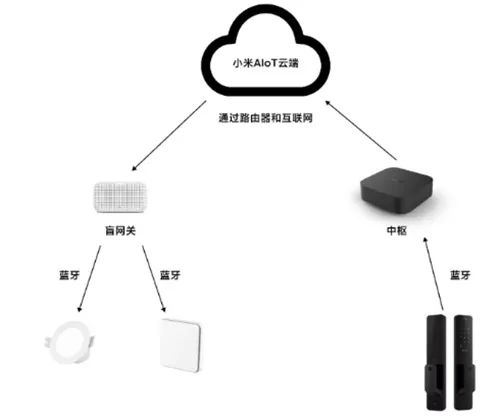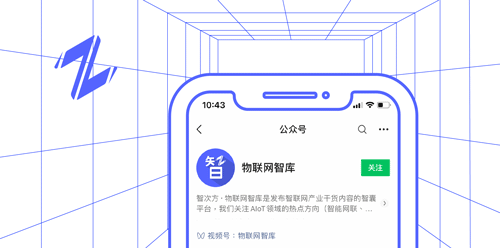
Author: Levin
IoT Think Tank Original
Introduction

“Daughter, go heat up the leftover soup from lunch in the microwave, and turn on the air conditioning while you’re at it.”
And five minutes later:
“Daughter, what are you doing sitting there?”
“Wait a minute, Mom, my phone is lagging, I’m trying to turn on the kitchen light.”
“…”
Although the joke is amusing, many people have likely experienced this scenario.
On the evening of June 16, “Mijia App crashed” trended on Weibo, with many users reporting that various devices within the Mijia App could not be controlled remotely. After a series of operations such as rebooting the router, reconfiguring the mesh, and reinstalling the app, the issue remained unresolved. Many users reacted strongly because just two months prior, the Mijia App had experienced a similar failure.

In fact, such crashes are not uncommon in the smart home sector. As early as the end of 2020, Google’s smart home system, Google Home, experienced a widespread service outage, preventing users from accessing services or changing settings via their phones. Amazon’s Alexa and Echo speakers also faced a large-scale service outage in 2018.
According to Xiaomi’s 2021 financial report, the Mijia App had 63.9 million monthly active users, and the number of Xiaomi AIoT connected devices (excluding smartphones, tablets, and laptops) had reached 434 million. The number of users with five or more devices connected to the Xiaomi AIoT platform had reached 8.8 million. It is evident that a service failure from Xiaomi alone could impact tens of millions of users and hundreds of millions of devices, making cloud stability crucial for both service providers and users.
What Happens After Smart Home Devices Receive Commands?
For smart home devices, their control logic is generally similar: when a user issues a command to a device, the device uploads the received command to a cloud server for recognition, and then the cloud sends the corresponding command back to the respective device. This transmission chain involves multiple links, including local, network, protocol, and device; any issue in any part can significantly degrade user experience.

Taking Xiaomi as an example, when a smart home device receives a command, it first transmits it to the gateway via protocols like Bluetooth, then the gateway forwards it to the router, and subsequently, the router sends it to the cloud server, which then issues the corresponding command back to the receiving device along the same route.
In this process, the cloud server holds the highest position; if issues arise in the cloud, the entire data transmission route is completely severed, and users naturally face the problem of being unable to control their devices. Many users might wonder—these devices are all in the same space, possibly only a few meters apart, why do they need to go through hundreds or even thousands of kilometers to execute this operation? It seems a bit “seeking distance over proximity.”
In fact, to avoid such issues, commands should not pass through the cloud but only go through the gateway and router.

In this case, a “central gateway” is needed as the main hub for all smart home devices, capable of storing various configuration scene information locally and coordinating local scenes through local area networks and Bluetooth protocols. Generally, only one central hub is needed in a system, but multiple central gateways can also be connected within the same home as “backup hubs“. When a main hub fails, a backup hub can promptly take over the original tasks of the main hub to maintain normal operation of local devices.
In addition to the “central gateway” and “backup gateway,” there are several other terms to understand. A “sub-gateway” refers to a gateway that can replace the central gateway for scheduling, and multiple devices can connect to the sub-gateway to execute control commands locally. By using the “central gateway + sub-gateway” model, not only can the network be expanded, but the system’s stability can also be increased, and the time for users to reconfigure can be reduced. A “blind gateway” only communicates through the cloud and cannot accept scheduling from the central gateway; to achieve linkage with devices under a blind gateway, it must go through the cloud.
Local Interaction and Control of Smart Devices Is the New Direction
Once upon a time, being able to control the lights and air conditioning temperature through a phone was very satisfying. However, as smart home setups have evolved, various devices are needed to support different scenarios like security, appliances, etc. A household can have dozens or even hundreds of smart devices, and users’ needs and expectations have risen significantly. After all, no user wants their painstakingly configured interaction scenes to become unresponsive due to network failure.
Currently, most smart home devices still rely on users to send commands, with devices passively executing them; “smart” merely means sending user intentions to the cloud, and devices cannot make fully autonomous decisions. When the number of devices is small, control is relatively easy, but as the number increases, it significantly raises user costs and the time needed to reconfigure after network failures.
As Xiaomi’s smart hardware management platform, the Mijia App is the main control hub for Xiaomi smart devices, allowing users to interact and interconnect with smart hardware via their phones. However, all these controls require remote server intervention; if the network fails, even if you are face-to-face with a smart speaker, it will “pretend” not to hear your command.
Unlike Mijia, which needs cloud services for command transfer, Apple’s HomeKit employs a different strategy, emphasizing localization. As a result, data does not leave the local network, effectively protecting user privacy.
Under Apple’s HomeKit framework, regardless of which communication module device manufacturers use, as long as they support Bluetooth and WiFi and integrate the HAP (HomeKit Accessory Protocol) protocol, they are compatible. Within the HAP protocol, iCloud manages device lists, permanent keys, and room groups, with all control being executed locally.

Of course, at the WWDC21 conference, Apple also announced that HomeKit will include support for the CHIP (Matter) protocol, which is likely to support localized control like the HAP protocol. Although currently there are not many devices supporting Apple HomeKit, with the support for the Matter standard for smart home interconnectivity, it is believed that more devices supporting local control and interconnectivity will be applied in various scenarios in the future.
Additionally, Xiaomi’s latest central gateway has, to some extent, returned local control to users. It holds a higher status than other gateways, with Xiaomi’s multi-mode gateway and Bluetooth gateway being its sub-devices. Devices within the same local area network can achieve local automated interactions centered around the Xiaomi central gateway, ensuring stable operation of devices and executing preset automated scenes even during network anomalies.
Why Has Local Control of Smart Home Devices Progressed Slowly?
According to IDC’s quarterly tracking report on China’s smart home device market, the shipment volume of smart home devices in China exceeded 220 million units in 2021, and it is expected to surpass 260 million units in 2022, reaching over 500 million units by 2026.
After years of development, not only have traditional appliance companies like Haier and Midea secured their positions in the smart home arena, but companies like Xiaomi, Apple, and Huawei have also developed their own smart home ecosystems. Even internet giants like Alibaba, Tencent, and Baidu have created their own blockbuster devices. Different companies leverage their strengths to either focus on entry points, layout ecosystems, or seize foundational standards in the smart home field.
However, most companies that succeeded in the internet era have not shifted their thinking in the IoT era, remaining stuck in the inertia of competing for traffic, aiming to establish ecosystems through centralized entry points, such as Amazon’s Echo, Google’s Google Home, and Xiaomi’s Mijia. Therefore, allowing smart home device commands to be transmitted to remote servers for app control, rather than executing locally, aligns more closely with commercial interests and helps establish a stronger moat in the era of the Internet of Things.
Moreover, similar to how smartphones are divided into Android and iOS camps, there exists a degree of closedness among different companies. The varying protocols supported by different smart home ecosystems lead to compatibility issues, and achieving full local control through cloud services across different manufacturers’ devices is still not feasible. However, from the user’s perspective, establishing a unified, more compatible communication protocol has become an inevitable trend and holds profound significance for the future development of the smart home industry.
Conclusion
While the experience of smart homes during network failures can be frustrating, most of the time, network conditions are stable and smooth, and the Mijia crash is still a rare occurrence. In such cases, using localized control to reduce data feedback delays, protect privacy, and enhance interaction experience is less about “providing timely assistance” and more about “adding the finishing touch.”
1.“Xiaomi Central Gateway: The Strongest Mijia Central Hub, Opening Up a New Era of Bluetooth Mesh“, Smart Network
2.“Mijia App Crashed Again! Official Response Claims Network Issues Are Being Gradually Resolved“, Beijing Daily

